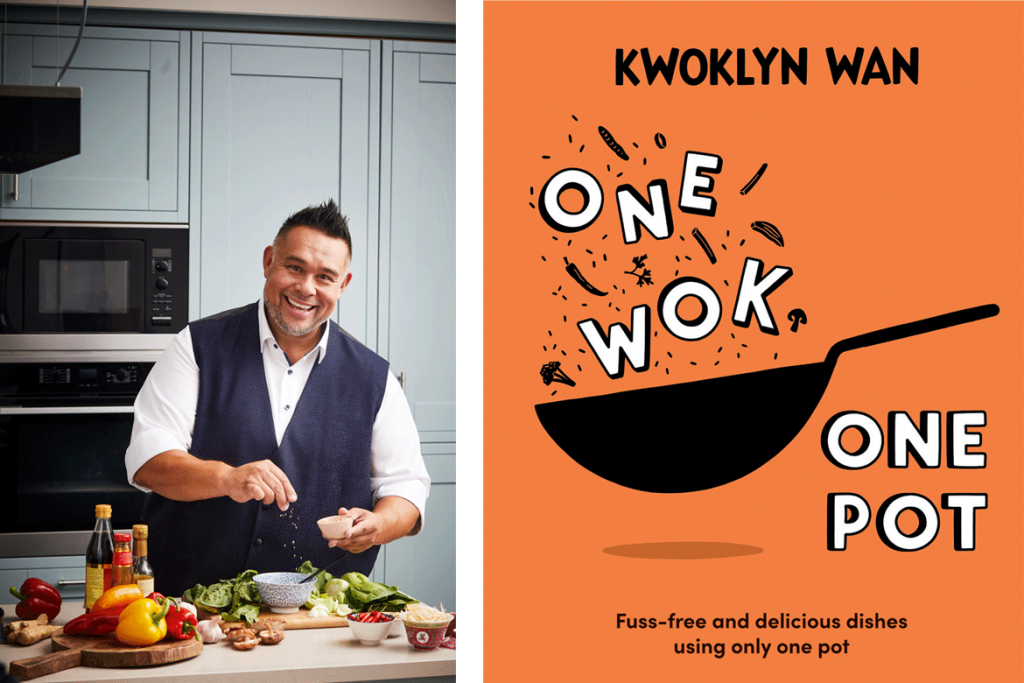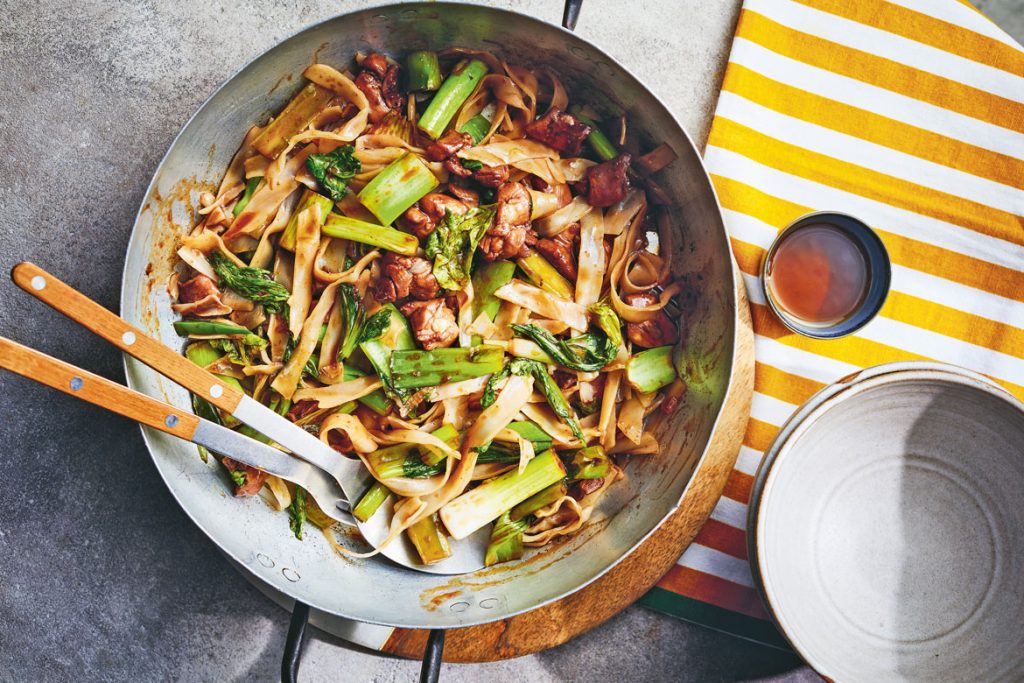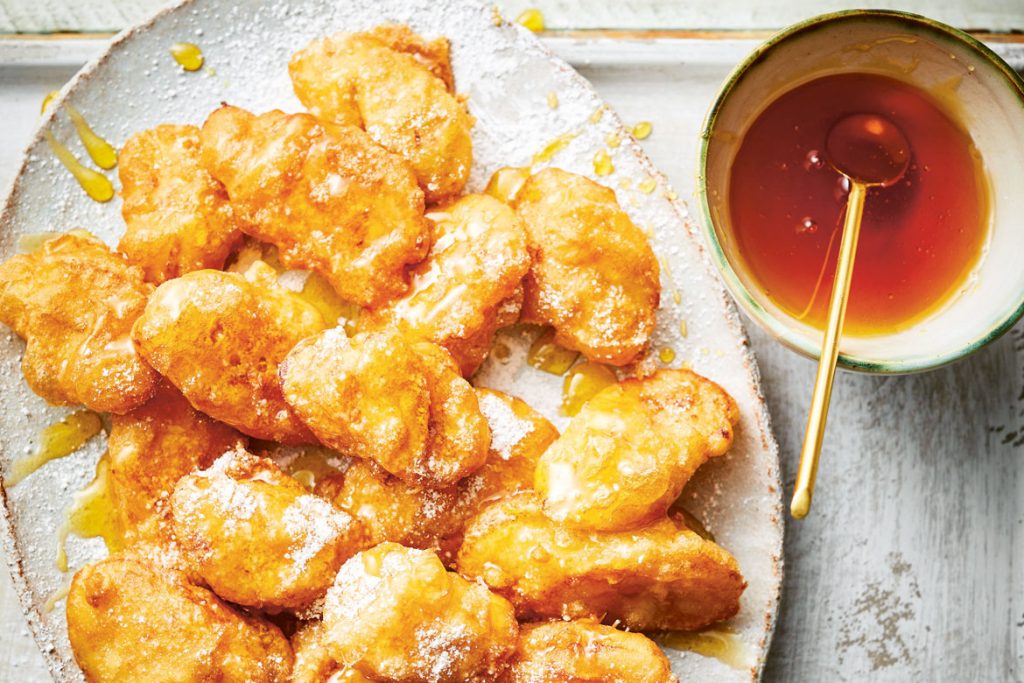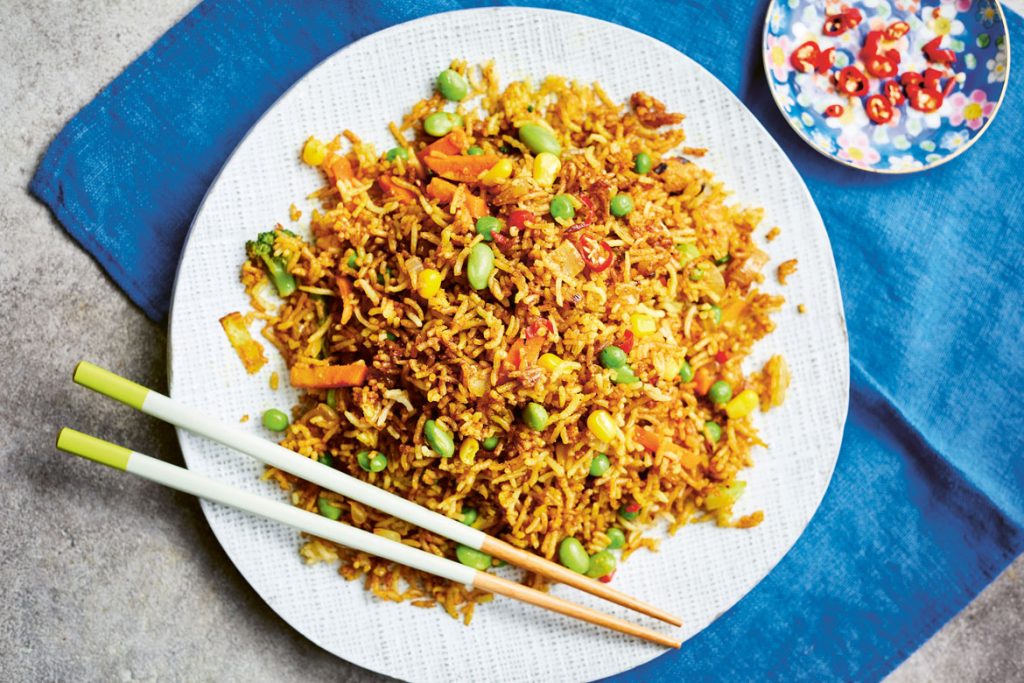Prudence Wade talks to the chef about writer’s block and getting creative in a campervan.
Chef Kwoklyn Wan bought a campervan two years ago, and you can be sure he hasn’t been cooking up basic fare on the road.
“We were eating so well – it was quite funny, actually. We’d look over to the people next door, and they were having their typical beans, bangers and bacon and stuff like that – and we were having squids and Macanese curry, and all these other bits and bobs,” Wan remembers with palpable glee.
Wok cooking is a big part of Chinese cuisine, and that requires a fierce heat – something that’s tricky to replicate out the back of a campervan. “We solved that problem by having an electric hook-up and taking an induction cooker with us,” the chef reveals – keen to give his cooking “a bit more oomph”.
Even so, cooking out of a campervan isn’t quite the same as being in a professional kitchen – and it required Wan, 49, to think a bit differently about his normal recipes.
“I thought, how could we simplify these dishes to make it really easy for cooking in a campervan and caravan?” – and so he began developing more one-pot or wok meals, which is the basis for his latest book.
One Wok, One Pot is Wan’s sixth cookbook – and he’s written them at a remarkable rate, having released his first in 2019. While Wan admits “I do get writer’s block”, a love of food spurs him on.
“I’m a big guy. I’ve enjoyed food my entire life – I grew up around food, in restaurants and takeaways. When there’s a special occasion, we eat, when there’s not a special occasion, we eat,” he reflects. “So, it made it [writing the books] very simple in a sense that we were always hungry – I was always hungry.
“I try to pen between 10 and 12 recipes a day when I’m writing. It sounds crazy. What I do, I write the recipe – I might see something, whether that is on social media or on TV, and then I think, ‘How would I do that? How would I change it?’ And I write a recipe.
“Once I’ve written the recipes, I then go into the kitchen and test them. I say, ‘OK, this didn’t work, or that flavour didn’t work, or you’ve got to add this at a certain time’.”
PICTURED ABOVE: (Left) Kwoklyn Wan | PA Photo/Sam Folan; (Right) One Wok, One Pot by Kwoklyn Wan by Kwoklyn Wan (Quadrille, £16.99) | PA Photo/Quadrille.
Now he’s onto book six, Wan has to think a bit more creatively. “The first couple of books, I was writing Chinese takeaway dishes – things you can pretty much have regardless of whether you’re sitting in the middle of London, Manchester, or even if you’re in New York – you’ll get similar dishes.
“But as the books have progressed, I’ve obviously had to start thinking outside of the box – especially with One Wok, One Pot, because I was thinking, ‘How can we create these dishes that are going to be substantial enough to class them as a one-pot dish?’ We can always do a chicken stir-fry in a wok, but that’s been written 1,000 times. So, how can we do a chicken stir-fry that’s actually got some body to it?”
While Wan might be best known for his cookbooks and TV appearances nowadays, he’s been working in Chinese restaurants and takeaways for more than 30 years – and he’s picked up useful tips and tricks along the way for home cooks.
“Preparation” is his top piece of advice. “When you work in any commercial kitchen, you’ll find everything’s out and ready for you – you’re not having to worry about whether the onions are chopped, or the meat’s been sliced into pieces, or even if it’s been velveted – a Chinese technique we use, where we tenderise the meat first, so everything’s been pre-done.
“When you’re cooking at home, especially if you’re thinking, ‘We’ve got an hour, I want to try to get dinner on the table’ – you’re going to try to fit all of that into your cooking time. Wok cooking is pretty minimal anyway – we’re talking a couple of minutes – but the prep will sometimes take you 45 minutes.”
Wan spent his childhood in takeaways (the family ran takeaways and a Cantonese Restaurant in Leicester), and some of his fondest memories are around Chinese New Year. He remembers a “party atmosphere” that was “very chaotic” in the restaurant in the weeks building up to the big event, saying: “And then at the end of it all, on Chinese New Year’s Day, my dad would invite his entire family – and there’s a lot, eight of them, I think, and they’ve all got children.
“The restaurant would be filled with all of my extended family, and my dad – well, the chefs – would create this amazing banquet for us all to sit down and eat.”
Chinese New Year fell on January 22 this year, and now Wan’s parents are older, his cousin has taken the reins. “He organises a big Chinese New Year party, he hires a small village hall and invites the family,” Wan says. “He’s an amazing chef – he cooks all the food, but this year they asked me to create two or three dishes for them.”
So, what did Wan plan to cook up for his fortunate family members? “I’ll probably do it more in line with a Western taste bud, because my cousins have had children now and they’re very much immersed within the British culture.
“I might do something simple, such as spring rolls… I’ll try to wing it where I’m not in the kitchen for 14 hours cooking up dishes. I try to keep it as simple as possible.”
One Wok, One Pot by Kwoklyn Wan is published by Quadrille, priced £16.99. Photography by Sam Folan. Available now.
Words by Katie Wright, PA
PA Photo/Sam Folan
Drunken chicken noodles
SERVES 2
“Contrary to what the name would suggest, the chicken in this noodle dish is not drenched in alcohol,” says Kwoklyn Wan. “A common theory behind the Thai name (Pad Kee Mao) is that they are simply a perfect recovery dish for the day after the night before.”
INGREDIENTS
- 400g fresh flat rice noodles (ho fun)
- 2tbsp vegetable oil
- 350g boneless skin-on chicken thighs, cut into 2.5cm pieces
- 2 garlic cloves, minced
- Thumb-sized piece of ginger, peeled and sliced
- 3 spring onions, cut into 5cm lengths, whites and greens separated
- 300g choy sum, cut into 5cm lengths, stalks and leaves separated
- 3tbsp oyster sauce
- 2tbsp light soy sauce
- 1tbsp dark soy sauce
- 2tsp chicken powder
- 125ml red wine
- 1tbsp cornflour mixed with 2tbsp water
- 1tsp sesame oil
METHOD
- Place the noodles in a colander or sieve (strainer) and loosen under hot water, drain and set to one side.
- Heat a wok with the oil over a medium-high heat, then add the chicken thighs and cook for about 12–18 minutes, turning occasionally until golden brown and cooked through.
- Now add the garlic and ginger and fry until fragrant, then add the spring onion whites and choy sum stalks along with the oyster sauce, light and dark soy sauces, chicken powder and red wine.
- Bring to the boil, then add the softened noodles, spring onion greens and choy sum leaves and combine.
- Give the cornflour mixture a stir and pour into the noodle sauce, mixing continuously until the sauce reaches your desired consistency.
- Turn off the heat and drizzle with the sesame oil.
PA Photo/Sam Folan
Fried bananas
SERVES 4
A simple and delicious dessert you’ll want to slather in golden syrup.
INGREDIENTS
- 4 ripe bananas
- Vegetable oil, for deep-frying
- Maple syrup, honey or golden syrup
- Icing sugar
- For the batter:
- 95g self-raising flour
- 25g cornflour
- 1 egg
- 1tbsp vegetable oil
- ½tsp baking powder
- 250ml cold water
METHOD
- Cut the bananas into 2.5cm chunks.
- Place all the batter ingredients in a bowl and mix until smooth.
- Heat the oil in a deep-sided saucepan or wok to 170°C (340°F).
- Dip the chopped bananas into the batter and then carefully fry them in batches in the oil until golden brown. Drain on a wire rack.
- Arrange on your serving plate, pour over your syrup and dust with icing sugar to serve.
- WARNING! Allow to cool slightly before eating as the bananas will be extremely hot when they first come out of the pan.
PA Photo/Sam Folan
Spicy Singapore vegetable rice
SERVES 2-3
INGREDIENTS
- 2tbsp vegetable oil
- 1 onion, finely diced
- 2 garlic cloves, roughly chopped
- 2 red bird’s-eye chillies, roughly chopped
- 500g cooked long-grain or basmati rice
- 150g frozen mixed baby vegetables, defrosted
- 2tbsp Chinese curry powder, or use your favourite
- 1tbsp light soy sauce
- 1tsp dark soy sauce
- Pinch of white pepper
- Salt, to taste
METHOD
- A quick weeknight meal you can whip up with frozen veg.
- Place a wok over a medium-high heat, add the oil and, once smoking, add the onion and garlic and fry until golden brown, being careful not to let the garlic burn.
- Add the chopped chillies and fry for a further 30 seconds until fragrant, then add the cooked rice and continue to fry for two to three minutes; you want the rice grains to toast slightly, which will give your dish a slightly nutty flavour, so don’t stir the ingredients constantly.
- Now add the thawed frozen vegetables along with the curry powder, light and dark soy sauces and white pepper and toss gently to combine with the rice. Once the ingredients are fully heated through, taste the rice and adjust the seasoning with salt if required. Serve piping hot.






Leave a Reply